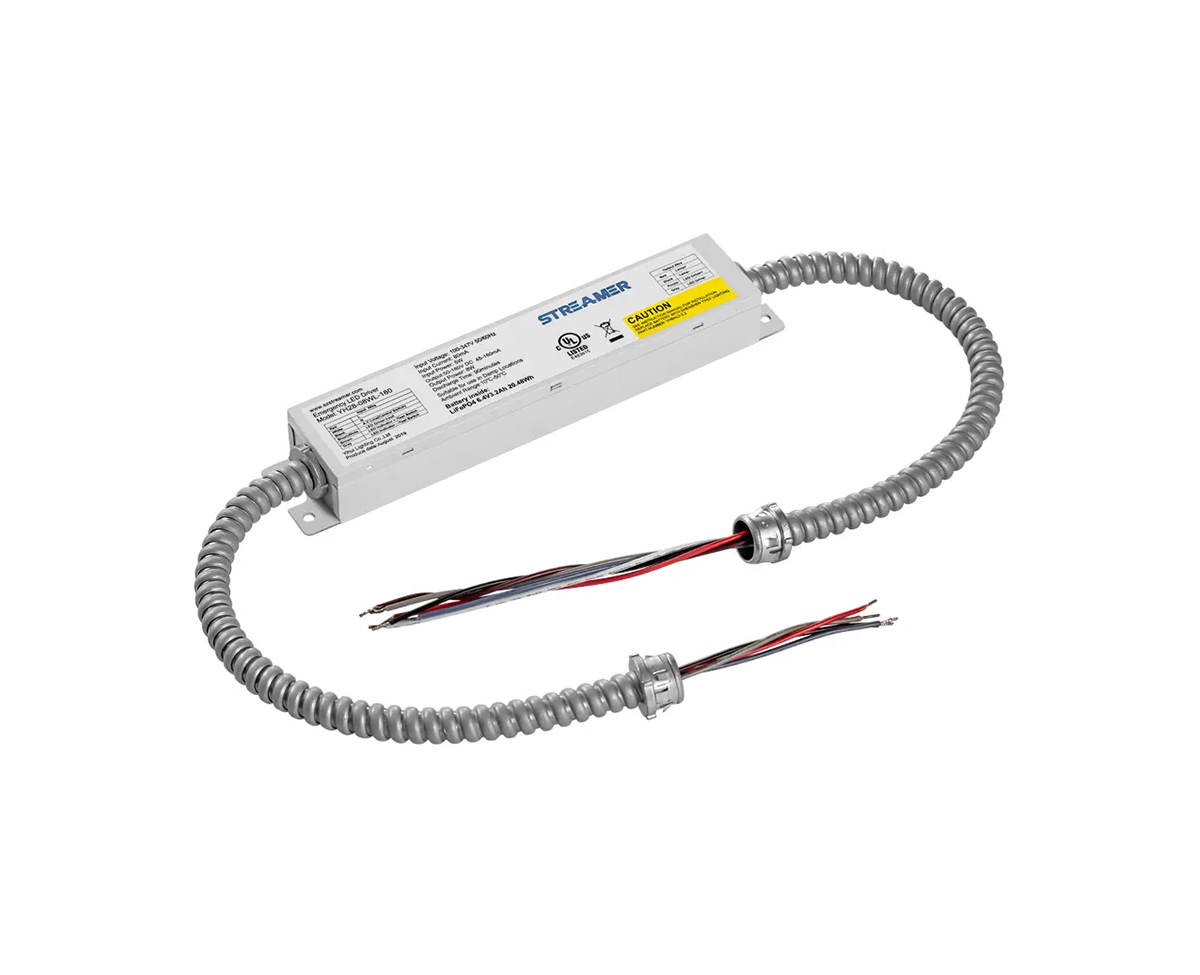 1
1
 Apr 04, 2025
Apr 04, 2025

LED emergency power packs are crucial devices that ensure the continuous operation of LED lighting systems during power outages or emergencies. To safeguard both the power pack itself and the connected LED devices, as well as to guarantee user safety, these power packs are equipped with a comprehensive set of protection features.
One of the most fundamental protection features is over - voltage protection. In the event that the input voltage to the power pack exceeds the rated value, perhaps due to a fault in the electrical grid or a malfunctioning power source, the over - voltage protection mechanism kicks in. This feature typically uses voltage sensors to constantly monitor the input voltage. Once the voltage exceeds the predefined threshold, the power pack automatically disconnects from the power source or takes measures to regulate the voltage, preventing damage to the internal components of the power pack and the LED lights. For example, a sudden surge in voltage could cause the semiconductor components within the LED driver to break down, but over - voltage protection acts as a shield to avoid such catastrophic failures.
Over - current protection is equally vital. When an abnormal increase in current occurs, such as a short - circuit in the LED lighting circuit or a malfunction in the power pack itself, the over - current protection feature intervenes. Current sensors are used to detect the flow of current. If the current exceeds the safe limit, the power pack will either limit the current output or shut down completely. This not only protects the LED lights from being damaged by excessive current, which can cause overheating and premature failure of the LED chips, but also prevents the power pack from overheating and potentially catching fire.
Thermal protection is another key aspect. LED emergency power packs generate heat during operation, especially when they are supplying power for extended periods or under heavy loads. Excessive heat can degrade the performance of the internal components and reduce the lifespan of the power pack. Thermal sensors are strategically placed within the power pack to monitor the temperature. When the temperature reaches a critical level, the power pack may reduce its output power, increase the fan speed (if it has a cooling fan), or even shut down to prevent thermal runaway. This protection feature ensures that the power pack operates within a safe temperature range, maintaining its reliability and durability.
Under - voltage protection is also essential. When the input voltage drops below the required level, which might happen during a brownout or due to a weak power source, under - voltage protection ensures that the power pack does not attempt to operate under suboptimal conditions. By detecting the low voltage, the power pack can either switch to an emergency power - saving mode or shut down gracefully. This protects the power pack from damage caused by operating with insufficient voltage, which could lead to erratic behavior of the internal circuits and potentially damage the battery (if the power pack has a battery backup).
In addition to these electrical and thermal protection features, many LED emergency power packs also incorporate short - circuit protection. A short - circuit can occur when two electrical conductors come into direct contact, bypassing the normal load. When this happens, the short - circuit protection mechanism immediately detects the abnormal current path and disconnects the power supply. This prevents excessive current from flowing through the power pack and the LED circuit, safeguarding both the equipment and the user from potential hazards.
Overall, the protection features of LED emergency power packs are designed to create a safe and reliable power - supply solution for LED lighting systems. They work in harmony to protect against a wide range of electrical and thermal risks, ensuring that the power pack can perform its emergency - backup function effectively and safely over an extended period.